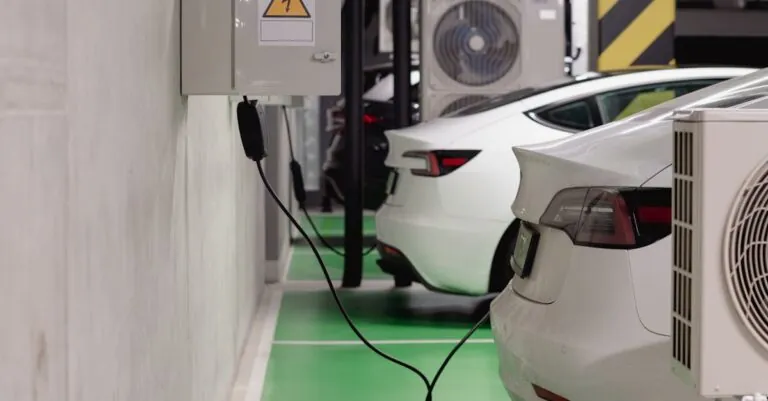Table of Contents
ToggleAs humanity hurtles toward a future where space travel becomes as routine as catching a flight, the need for regulatory tech in spaceflight is skyrocketing. Imagine a world where astronauts don’t have to worry about navigating a cosmic maze of rules and regulations—thanks to innovative tech designed to keep them safe and compliant.
Overview of Regulatory Tech for Spaceflight
Regulatory technology for spaceflight streamlines compliance processes, making them more efficient. This tech enables companies to navigate complex regulations governing spacecraft operations, missions, and safety standards. With advancements in tools and software, organizations can better manage regulatory requirements, ensuring a smoother path to approval.
Developers prioritize creating platforms that automate documentation and reporting. These platforms provide real-time data analysis and generate alerts when regulations change, keeping organizations informed. Enhanced visibility into compliance helps aerospace companies identify potential risks early, leading to proactive solutions.
Moreover, collaboration tools facilitate communication between stakeholders. Regulatory agencies, private companies, and international bodies benefit from sharing data and insights. As a result, organizations can respond promptly to shifting regulations and maintain compliance without extensive delays.
Specific technologies such as blockchain and artificial intelligence play crucial roles in regulatory tech. Blockchain enhances transparency by providing tamper-proof records of compliance activities and decisions. AI algorithms analyze vast amounts of regulatory data, enabling organizations to identify trends and adapt their strategies accordingly.
Investment in regulatory tech not only fosters safety and compliance but also accelerates innovation in spaceflight. With simplified regulatory processes, companies can dedicate more resources to research and development. A streamlined approach positions organizations to adapt rapidly to the evolving landscape of space travel.
Regulatory tech is essential for the future of spaceflight. It simplifies compliance, enhances collaboration, and supports innovation. As space travel continues to grow, this technology will play a pivotal role in ensuring safe and efficient operations in the expanding universe.
The Importance of Compliance in Space Missions
Compliance plays a critical role in ensuring the success and safety of space missions. As regulations evolve, understanding and adhering to them becomes essential for all stakeholders involved.
Ensuring Safety Standards
Safety standards protect astronauts and ground personnel during space missions. Regulatory technology aids aerospace companies in tracking compliance with these standards. Automated documentation ensures that all safety protocols are met. Companies can access real-time data for rigorous safety audits. Identification of potential risks occurs early, allowing for timely interventions. Vigilance in safety practices fosters a culture of accountability among team members. Engaging with regulatory platforms lets organizations stay current with safety requirements. Enhanced reporting tools simplify communication with regulatory agencies, ensuring transparency in operations.
Managing Environmental Impact
Environmental management is crucial in the context of spaceflight. Companies must minimize the ecological footprint of their missions. Regulatory technology assists in monitoring emissions and waste generated during launches. Compliance platforms enable businesses to adhere to environmental regulations effectively. Tracking resource usage allows for informed decisions on sustainability practices. Engagement with international environmental standards supports global collaboration. By prioritizing compliance, organizations can enhance their public reputation. Efficient waste management strategies also contribute to overall mission success.
Key Technologies in Regulatory Tech
Regulatory tech in spaceflight encompasses several key technologies essential for compliance, safety, and efficiency. Data analytics and monitoring tools alongside blockchain technology play pivotal roles in this evolving landscape.
Data Analytics and Monitoring Tools
Data analytics tools analyze vast amounts of regulatory information quickly. Real-time monitoring capabilities provide alerts on regulatory changes, ensuring companies adhere to current standards. These tools enable organizations to track compliance status effortlessly. Enhanced visibility into data presents insights into potential risks, allowing for proactive management. Analytics platforms can predict trends within regulatory environments, simplifying decision-making processes. This technology empowers companies to allocate resources more effectively, facilitating innovations while maintaining compliance effortlessly.
Blockchain for Transparency and Security
Blockchain technology establishes a tamper-proof record of compliance activities. Each transaction logged creates an immutable audit trail, enhancing accountability for aerospace companies. Collaborations between stakeholders benefit from blockchain’s secure sharing capabilities, ensuring all parties access accurate data. It fosters trust among regulatory agencies and private companies alike. By utilizing this technology, organizations can streamline reporting processes significantly. Security measures inherent in blockchain reduce the risk of data breaches. Adoption of blockchain solutions ultimately supports a culture of transparency within the industry.
Challenges in Implementing Regulatory Tech
Implementing regulatory technology in spaceflight presents several challenges. Understanding the nature of these obstacles is critical for ensuring effective integration.
Technical Barriers
Technical barriers often hinder the adoption of regulatory tech. Systems may not integrate seamlessly, leading to data silos within organizations. Legacy infrastructure frequently complicates the implementation process, requiring significant investments in upgrades or new solutions. Scalability represents another challenge; technology needs to accommodate rapid advancements in the industry. Inconsistent data formats across various platforms can impede effective communication, as organizations seek standardization. Moreover, cybersecurity issues arise, necessitating robust measures to protect sensitive compliance data. Adopting innovative solutions demands careful planning and collaboration among stakeholders.
Regulatory Frameworks and Standards
Regulatory frameworks and standards present additional hurdles. The aerospace sector is governed by complex regulations that frequently evolve. Companies often struggle to keep pace with these changes, making compliance cumbersome. Varied international regulations complicate the landscape further, as global operations must navigate different legal requirements. The absence of uniform standards can lead to confusion, potentially hindering innovation. Organizations must also adapt their internal policies to align with comprehensive regulatory mandates. Therefore, a proactive approach toward understanding and adapting to these frameworks is essential for successful implementation of regulatory tech.
Future Trends in Regulatory Tech for Spaceflight
Adoption of regulatory tech in spaceflight continues to evolve rapidly, driven by innovations and heightened collaboration.
Innovations on the Horizon
Emerging technologies promise to enhance regulatory tech for spaceflight significantly. Machine learning algorithms, for instance, enable predictive analytics, allowing organizations to forecast regulatory changes and adapt proactively. Automation tools streamline compliance processes, reducing manual workload and minimizing human error. With the integration of virtual reality, training for compliance can become more immersive and effective, enhancing understanding of complex regulations. Increasingly, regulatory tech platforms incorporate user-friendly interfaces, making it easier for stakeholders to navigate compliance requirements. These advancements create a more agile and efficient industry, ensuring that safety and compliance remain paramount.
Potential for Global Collaboration
Global collaboration stands to benefit immensely from advancements in regulatory tech. Enhanced communication platforms facilitate seamless interaction between international regulatory bodies, private companies, and governmental agencies. When stakeholders share real-time data through shared platforms, organizations can align compliance efforts more effectively across borders. Standardized regulations may emerge, simplifying the compliance landscape and promoting smoother international operations. Utilizing blockchain, entities can securely share compliance data, enhancing trust and cooperation in the aerospace sector. These collaborative approaches drive innovation while addressing regulatory challenges that transcend national boundaries.
Conclusion
Regulatory technology is poised to transform the landscape of spaceflight by enhancing safety and compliance. As companies embrace these innovations they can streamline operations and focus on advancing their missions. The integration of tools like AI and blockchain not only simplifies compliance processes but also fosters a culture of transparency and accountability.
Emphasizing environmental responsibility and proactive risk management will be crucial as the industry evolves. By investing in regulatory tech organizations can navigate complex regulations more effectively while driving innovation. This commitment to compliance ensures that space travel remains safe and sustainable paving the way for future explorations.







